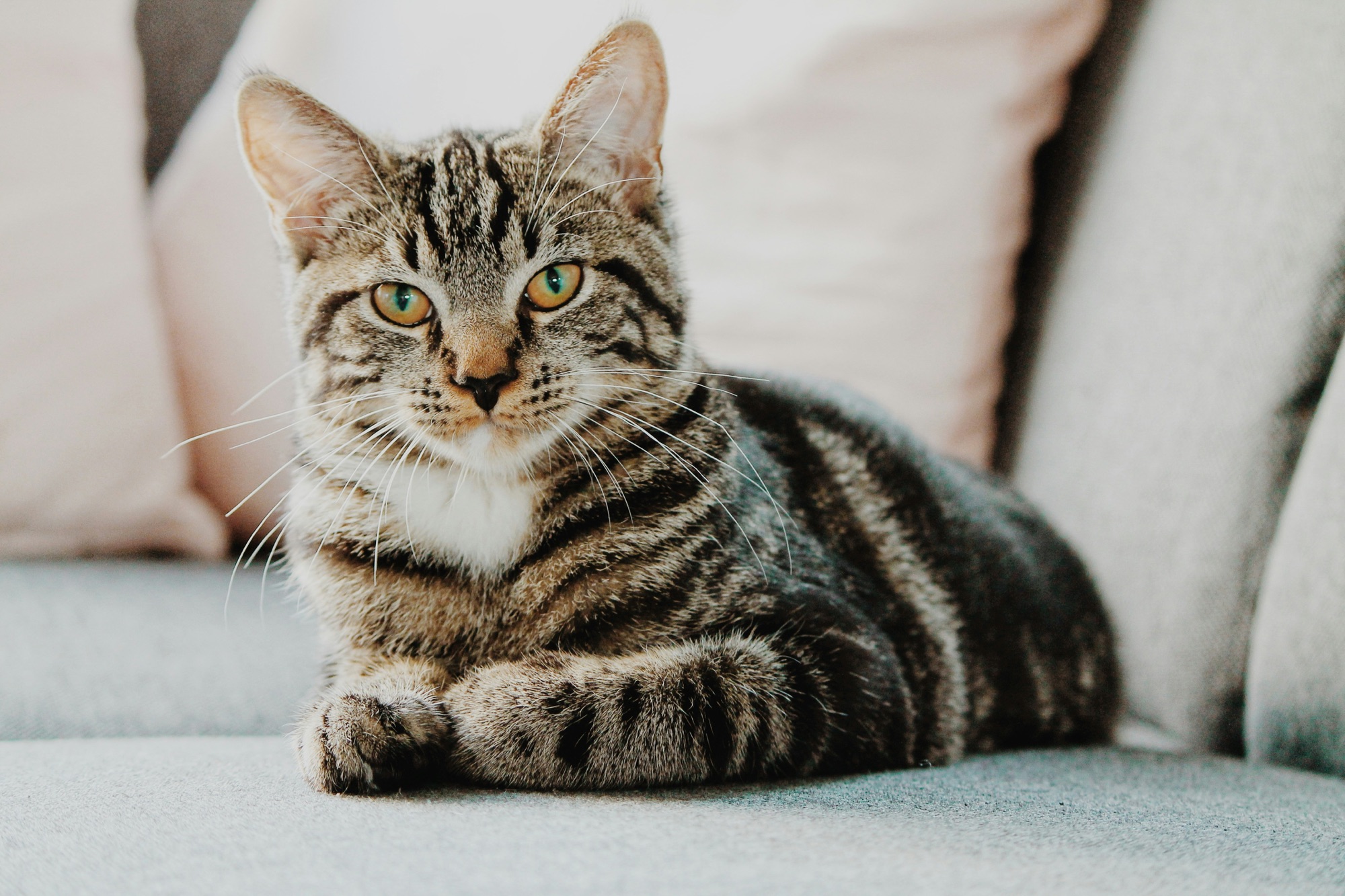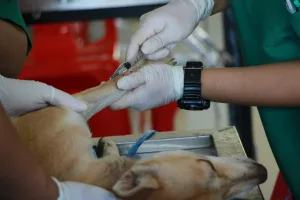Cats are known for their incredible agility and balance, which often allows them to land on their feet after a fall. This remarkable ability, known as the “righting reflex,” has fascinated scientists and cat owners alike. Understanding why and how cats can perform this feat involves exploring their anatomical structure, neurological functions, and evolutionary adaptations. This article delves into the science behind cats’ righting reflex and other factors that contribute to their ability to land on their feet.
The Righting Reflex Development and Function
Early Development
The righting reflex begins to develop in kittens as early as three weeks of age and is usually fully developed by seven weeks. This reflex is an automatic response that allows cats to reorient their bodies in mid-air so they can land on their feet. Observing kittens during these early stages, you’ll often see them practicing these movements, sometimes with playful falls from low heights, which is nature’s way of honing their skills.
Neurological Mechanism
The righting reflex is controlled by the vestibular system, located in the inner ear, which helps cats maintain their balance and spatial orientation. When a cat falls, the vestibular system sends signals to the brain about the body’s position. The brain then coordinates the movement of the head, spine, and limbs to align the body for a safe landing. This process is so fast that it often takes less than a second for a cat to reorient itself mid-air.
Sequence of Movements
- Head Rotation: When a cat begins to fall, it first rotates its head to face downward, using visual and vestibular cues to determine the direction of the fall. This is crucial as it sets the stage for the rest of the body to follow.
- Spine and Body Alignment: Following the head rotation, the cat arches its back and twists its spine to align the front and back halves of its body. This movement allows the cat to reorient its body so that its feet are positioned towards the ground.
- Limb Extension: As the body reorients, the cat extends its front legs and then its back legs to prepare for landing. This extension helps absorb the impact of the fall and further stabilizes the cat’s position.
Anatomical Adaptations
Flexible Spine
Increased Flexibility: Cats have a highly flexible spine composed of 30 vertebrae, allowing them to twist and bend their bodies with ease. This flexibility is crucial for the righting reflex, enabling cats to make rapid adjustments to their body position while falling. Imagine a gymnast twisting in mid-air; that’s how cats utilize their spine to adjust their orientation quickly.
Lack of Clavicle
Enhanced Movement: Cats have a unique skeletal structure with a vestigial clavicle (collarbone), which is not attached to other bones but rather embedded in the shoulder muscles. This allows for a greater range of motion in their front limbs, facilitating the precise movements needed for the righting reflex. This anatomical feature is akin to a ball-and-socket joint, offering unparalleled flexibility.
Low Body Mass
Reduced Impact: Cats typically have a low body mass relative to their size, which helps reduce the force of impact when they land. Additionally, their muscular bodies and padded paws provide cushioning, further minimizing the risk of injury from falls. Imagine how children bounce more easily than adults due to their lighter frames; cats benefit similarly from their low mass.
Evolutionary Adaptations
Arboreal Ancestry
Tree-Dwelling Ancestors: Cats are descended from tree-dwelling ancestors who needed to navigate branches and heights skillfully. The ability to land on their feet likely provided a survival advantage, helping them avoid injuries from falls and allowing them to hunt and escape predators effectively. This arboreal lifestyle demanded agility and coordination, traits that have been passed down through generations.
Hunting and Escape Mechanisms
Enhanced Agility: The righting reflex and other adaptations contribute to cats’ overall agility and balance, which are essential for hunting and escaping from predators. These abilities have been honed through millions of years of evolution, making modern cats highly adept at controlling their body movements. In the wild, a cat’s ability to quickly right itself can mean the difference between life and death when dodging predators.
Limits and Exceptions
Safe Fall Distance
While cats are adept at righting themselves during a fall, the height from which they fall can affect the outcome. Falls from moderate heights (typically between 1.5 to 7 stories) allow cats enough time to reorient their bodies and land safely. However, falls from very short heights may not give them sufficient time to right themselves, while falls from extreme heights can result in serious injuries despite their abilities. In New York City, veterinarians have termed “high-rise syndrome” for cats who fall from significant heights and survive due to their righting reflex, though not without injury.
Impact of Health Conditions
A cat’s health and age can influence its ability to perform the righting reflex. Older cats or those with health conditions such as arthritis may have reduced flexibility and slower reaction times, making it harder for them to land on their feet. As a cat ages, just like humans, its joints and muscles become less responsive, which can impede its once lightning-fast reflexes.
Practical Tips for Cat Safety
Creating Safe Environments
To protect your feline friend, ensure windows and balconies are secure. Screens should be sturdy and in good repair, as curious cats may lean against them, leading to potential falls. If you live in a high-rise apartment, consider installing cat-proof screens or keeping windows closed.
Encouraging Safe Play
Provide plenty of entertainment and safe climbing opportunities indoors. Cat trees and shelves can satisfy your pet’s climbing instincts while minimizing risk. These structures not only offer exercise but also mental stimulation, keeping your cat happy and healthy.
Monitoring Health Changes
Regular veterinary check-ups can help detect issues like arthritis early, allowing for interventions that can maintain your cat’s flexibility and reflexes. Keep an eye on changes in your cat’s mobility and consult your vet if you notice your cat struggling with jumps it once made easily.
Case Studies and Real-Life Examples
High-Rise Survivors
There have been numerous stories of cats surviving falls from high buildings, thanks to their righting reflex. In one documented case, a cat survived a 32-story fall in New York City, suffering only minor injuries. These incidents highlight the robustness of the righting reflex but also underline the importance of preventive safety measures.
Domestic vs. Wild Cats
While domestic cats have maintained many of their ancestors’ survival skills, wild cats, such as leopards and jaguars, exhibit these abilities on a grander scale, often navigating vast forest canopies. Observing these big cats in the wild gives insight into the evolutionary roots of the righting reflex.
Understanding the Physics
The Science Behind Falling
When a cat falls, it uses the principles of angular momentum to right itself. By twisting its body and adjusting its mass distribution, the cat effectively reduces its rotational inertia, allowing it to spin quickly. This is similar to how a figure skater pulls in their arms to spin faster.
Role of Air Resistance
As the cat spreads its legs and tail, it increases air resistance, which helps slow its descent slightly and stabilize its body. This technique is comparable to how skydivers use their limbs to control their fall.
Conclusion
Cats’ ability to land on their feet is a fascinating combination of neurological, anatomical, and evolutionary factors. The righting reflex, flexible spine, unique skeletal structure, and evolutionary history all contribute to this remarkable skill. While there are limits to their abilities, and falls from certain heights can still result in injuries, the righting reflex remains one of the most intriguing aspects of feline biology. Understanding these factors not only highlights the marvels of nature but also underscores the importance of ensuring safe environments for our feline companions.
By appreciating the complexities of the righting reflex, cat owners can better protect their pets and marvel at the incredible adaptations that nature has fine-tuned over millions of years. Whether it’s through creating a safe home environment or engaging in interactive play, we can support our cats in maintaining their agility and health.




